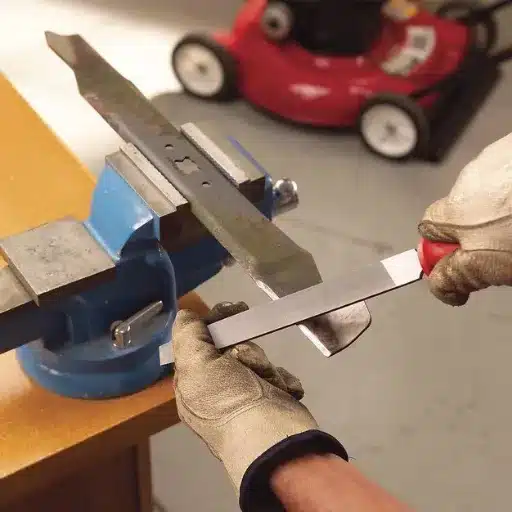It can be safe to say that within the world of snacks, few can really contest the potato chip in terms of popularity, and indeed, sales. (Recommended: Potato Chip Production Line)Found in almost every household, taken along for picnics, and served at parties, the history of the crunchy snack is just as intriguing as its taste. From its humble beginnings as a kitchen experiment, this blog will discuss the factors that contributed to the recognition of the potato chip, and its status in today’s world. And how through an unthinking discovery, an entire industry was created that would shape how the world would consume snacks in the future and secure a position in history’s culinary narrative. By learning the story behind the creation of the potato chip, the readers will appreciate the complexities involved in its invention which included a spark of imagination mixed with creativity and a pinch of luck, which brought the crunchy snack creation into the world.
What is the origin story of potato chips?

The history of the potato chip goes back to 1853 in Saratoga Springs, New York. This creation story increasingly has chef George Crum as its co-creator. In this case, the owner of Moon’s Lake House, Crum had a customer who repeatedly complained about the thickness of his fried potatoes and their unappealing mushing texture. This angered Crum so he went to the other extreme and cut the potatoes into the thinnest possible slices before frying and sprinkled a lot of salt on top of them ‘then to his amazement’ the customer enjoyed the chips. And thus the potato chip was created. That was a chance that changed and created a snack that is popular all across the world.
Who invented the potato chip?
The potato chip is said to have been invented by George Crum in 1853 at Moon’s Lake House in Saratoga Springs, New York, who was an African American chef. What began as the attempt to please a fussy customer by making thin, crispy potatoes, became the foundation for the snack which is eaten around the world today. Nevertheless, whereas Crum is most of the time recognized, some dispute his authorship and point out that it might be his sister Catherine Wicks or some other cooks in the vicinity who may have contributed. Therefore, the potato chip invention, as most people believe, to have been the brainchild of Crum with a stroke of creative genius and an artistic deep frying experiment is much less simple and could have been the collaborative effort across multiple actors within the local cuisine of that time.
How did the potato chip change the world of snacks?

Potato chips were a new product in the snack range featuring a new product category crispy salty snacks and in no time spread to many countries. Its popularity and the big consumer market made it possible to add several varieties and extensions to increase the marketability of the snack. The development of potato chips initiated the incredible growth of the snack food segment which stimulated improvements in delicacy, shape, and design. Accordingly, chips became people’s favorites in all parts of the world which changed their lifestyle in terms of the choice of food, the way of eating, and the nature of the food industry. Thus, potato chips are the snacks we now take for granted and omnipred, began the age of the snacks that could be drawn from packaged containers.
Why are potato chips considered a revolutionary snack food?
The potato chips gained a reputation for being a game changer in snacks especially when it comes to looking for something that would take a while to get spoiled due to the crunchiness paired with a salty taste. The first chips positioned themselves into the market as the first-ever processed delight that gave people a different way of enjoying potatoes as it right off allowed them to be preserved. This allowed potato chips to get introduced to the market easily while planting the foundations of the huge snack industry we have today. Besides that, the convenience of flavoring and packaging chips also created many different types of snacks to match consumers’ newly changing opinions and quickly developed the snack market. Their triumph highlighted the innate skill of transforming simple components into delicious treats that would end up being liked globally.
How did the invention of potato chips lead to the creation of new flavors like sour cream and onion?
New varieties of chips, such as sour cream and onion, were made possible as a result of the invention of potato chips which was associated with experimentation and innovation in the culinary world. Potato chips created a demand for their mass production entities as they attracted an immense amount of potential consumers as a result of the taste diversity they offered. First of all, only salted chips were available for consumers, but active market rivalry required differentiation of the products with identifiable tastes. All sorts of seasonings were first tried and developed “on the fly” with all those being shaped by the trends and the practices heard from the consumers. Because the taste of sour cream and onion is quite sharp and blends in perfectly with the crunchy texture of potato chips, they are the most popular everywhere. The industry simply adopted the evolution in flavors to meet the expectations of their consumers and gain more control over the market.
What are the global impacts of potato chips on snack food industries?
Potato chips, on the other hand, are of great importance to the economies of the countries that produce them and to the economic activities of the snack food industries in those countries as they propel diversification of the markets and growth of the economy. Potato chips have evolved from being a regional delicacy to a global cuisine; changing how production processes and distribution channels are executed all over the globe. Other notable impacts include the encouragement of the agricultural sector through the growing of potatoes and also food processing and flavoring technologies. In this wide market, economies of scale have prevailed which led to cost effectiveness and further advancement of packaging technology which ensures freshness of the products.
Contains Technical Specifications
Agricultural Development: Innovations taken by potato farmers and increased production of the tuber crop
Food Processing: Innovating and refining frying techniques together with the type of oil used for frying, to have a uniform taste and texture.
Flavor Engineering: Altering food formulation to achieve a desirable flavor while controlling spoilage factors, e.g. sour cream and onion flavored, barbecue, etc.
Packaging Solutions: Modified atmosphere (MAP) and vacuum packing systems are used to ensure longer shelf life while retaining the crispness of the chips while transporting.
With the globalized world, these advancements all enhance the potato chips market and make room for bigger and aspiring markets to emerge as people are on the lookout for changing Logan consumer palate.
What is the connection between potato chips and French fries?

Potato chips and French fries share a fundamental connection as both are derived from the same primary ingredient: the potato. Their origins trace back to similar culinary traditions, emphasizing the versatility of potatoes as a staple food. Both snacks, although prepared differently—chips through slicing and frying until crispy and fries through cutting into strips and frying to a tender texture—highlight the adaptability of cooking techniques to create diverse culinary experiences. Furthermore, the popularity of both has encouraged the development of innovative frying methods and flavor enhancements, making them iconic components of global cuisine.
How did French fries influence the creation of potato chips?
A part, but only a part, of the reason why potato chips began to be produced may be traced to the excitement created by the French fries. There is joseph wally Shang invented potato chips sometime in the mid sixteen hundreds. The name attached to this controversy is that of Crum, whose interests are the people who first started making potato chips in the mid-nineteenth century. It is reported that one of Crum’s patrons ordered French fries only to return them two times saying that they were too thick. In a fit of gastronomical imagination, Crum cut the potatoes into tiny pieces, completely fried them, and added some salt to them. The customer would help himself to french fries and devise a novel idea like this. Hence the untapped potential of creating other fried potato snacks, which include more potato chips, and compost out of french fries exhausted the attention and resources for grappling.
What distinguishes potato chips from French fries in terms of preparation?
The main difference that I notice while preparing potato chips and French fries is their way of processing. Thick slices are used to prepare French then cut into strips. For potato chips, however, slivers of this thickness are cut into chips and deep-fried. Also, the French fries are fried until the outer surfaces turn crispy but the inner parts remain soft, while for potato chips, thin slices are designed to be crunchy. Furthermore, cooking temperature and duration may differ; for example, more oil is required in making chips and thus, more oil is consumed in making French fries as compared to chips. My selection of the amount of spices and the manner of their addition during preparation also contributed to the differences in these snacks.
How did Moon’s Lake House contribute to the potato chip’s popularity?

Moon’s Lake House played a pivotal role in the popularization of potato chips due to its association with the invention of this snack. Located in Saratoga Springs, New York, the establishment was where chef George Crum created the potato chip in 1853. The restaurant gained fame for this accidental invention, attracting diners eager to sample the crisp new snack. As word spread, other establishments began replicating the recipe, leading to the potato chip’s rise in popularity beyond the local area. Ultimately, Moon’s Lake House became synonymous with this culinary delight, serving as the launching point for what would become a global commodity.
How did Moon’s Lake House help in popularizing the potato chip?
Moon’s Lake House played a vital part in gaining ground for potato chips as it was the first snack ever created due to Chef George Crum around, 1853. The economy of the restaurant was bolstered because of the presence of numerous rich and well-known clientele who created a buzz around the new snack. Krum’s patented creation copied the business as the clients were used to moan about thick French fries, Krum sliced them very thin and baked them until crisp. Because of the fame derived from Moon’s Lake House, potato chips grew in popularity quickly and inspired many other restaurants to offer the snack which would eventually gain international attention.
How are potato chips made and kept crispy?

Potato chips are made by first selecting high-quality potatoes, which are then washed, peeled, and sliced into thin, uniform pieces. These slices are typically washed again to remove excess starch, ensuring they do not stick together. The slices are then fried in hot oil at a consistent temperature until they become golden and crispy. To keep chips crunchy, it’s crucial to thoroughly drain excess oil, often using specialized equipment designed to spin and remove the oil efficiently. After frying, chips are seasoned and quickly packaged in airtight bags that protect them from moisture and air, crucial for maintaining their crispness over time.
What is the recipe for making crispy potato chips?
To make crispy potato chips at home, follow this simple recipe:
Ingredients:
- 4 large russet potatoes
- Vegetable oil for frying
- Salt to taste (or other seasonings as desired)
Instructions:
- Prepare Potatoes: Start by washing and peeling the potatoes. Use a mandoline or sharp knife to slice the potatoes very thin, about 1/8-inch thick, ensuring uniform thickness for even frying.
- Rinse: Rinse the potato slices in cold water to remove excess starch, which helps prevent sticking and ensures crispiness. Drain and pat them dry with a clean towel.
- Fry: Heat vegetable oil in a large, deep skillet or a fryer to about 350°F (175°C). Carefully add a small batch of potato slices to the hot oil, avoiding overcrowding, and fry until golden brown. This usually takes about 3-4 minutes.
- Drain: Using a slotted spoon, remove the chips from the oil and drain them on a paper towel-lined baking sheet to absorb excess oil.
- Season: While the chips are still warm, sprinkle them with salt or your seasoning of choice.
- Store: If not serving immediately, let the chips cool completely and then store them in an airtight container to maintain their crisp texture.
This method, adapted from top culinary sites, ensures homemade potato chips that are delightfully crunchy and packed with flavor.
How do manufacturers keep the chips fresh?
To keep chips fresh, manufacturers rely on packaging technologies. First, they use airtight bags made from materials that act as barriers to moisture and oxygen, two elements that can reduce crispness over time. Additionally, these packages are often filled with nitrogen gas, which displaces oxygen and prevents spoilage and flavor degradation. Based on what I’ve read from leading sources, this process helps ensure that chips maintain their crunch and taste from the manufacturing plant until they reach consumers.
What innovations have been introduced in potato chip manufacturing?
The last decade has seen a lot of changes in the way potato chips are produced as a result of the latest technologies that focus on waste reduction, environmental protection, and cost efficiency. To this end, there are advanced laser peeling technologies that improve waste generation and further enhance the yield through accurate potato skin removal. According to the manufacturers, continuous frying systems have been incorporated in which temperatures are more easily controlled, allowing for better quality chips and a decrease in the amount of oil used in the process. Another interesting technical advancement has been seen with vacuum frying, which occurs under lower temperatures and helps in retaining the essential nutrients and natural qualities of the potatoes; hence healthier snacks for the age group. Standard setting requires also attention and respect such improvements as modified atmosphere packaging (MAP) whereby the oxygen present is replaced by gas eg nitrogen to limit the oxidation of chips and ultimately increase their shelf life. All these changes are a testament to the market adapting to new technologies in the quest to improve the quality of snacks while making them more ecological.
References
- Potato chip – Wikipedia
- Who Invented the Potato Chip? – History.com
- Potato chip | History, Brands, Flavors, & Facts – Britannica
Frequently Asked Questions (FAQ)
Q: What is the origin of potato chips?
A: Potato chips are believed to have originated in the United States, specifically in Saratoga Springs, New York. They were originally called “Saratoga Chips”.
Q: Who invented potato chips?
A: The invention of potato chips is often credited to George Crum, a chef who worked at a resort in Saratoga Springs. The story goes that he created the chips by slicing potatoes thinly and frying them to a crisp after a customer, possibly Cornelius Vanderbilt, complained that his fries were too thick.
Q: What are Saratoga Chips?
A: Saratoga Chips is the original name for potato chips. They were named after Saratoga Springs, where they were first made by George Crum.
Q: How did potato chips become popular?
A: Potato chips gained popularity when Laura Scudder began packaging them in wax paper bags in the 1920s, which helped to keep them fresh. Later, Herman Lay helped to popularize them further by founding a potato chip factory and distributing them widely.
Q: What is the difference between crisps and chips?
A: In the United States, “potato chips” refer to thin slices of potato that are fried until crisp. In the UK, they are called “crisps”, while “chips” refer to what Americans call “fries”.
Q: How were potato chips originally made?
A: The first potato chips were made by slicing potatoes thinly and frying them in slices or shavings until they were brown and crispy.
Q: Who is William Kitchiner and what is his connection to potato chips?
A: William Kitchiner was a British cook and author who wrote a cookbook that included a recipe for “potatoes fried in slices”. While he did not invent potato chips, his recipe is an early example of cooking potatoes in a way similar to chips.
Q: How did Herman Lay contribute to the history of potato chips?
A: Herman Lay was a key figure in the commercialization and distribution of potato chips. He opened his own restaurant and later established a potato chip factory, significantly helping to increase their availability and popularity.
Q: How have potato chips evolved?
A: Potato chips have evolved from a simple snack to a versatile product with a variety of flavors like salt and vinegar or ketchup chips. Innovations in packaging, such as using wax paper and later foil bags, have also helped maintain their freshness and expand their market.









